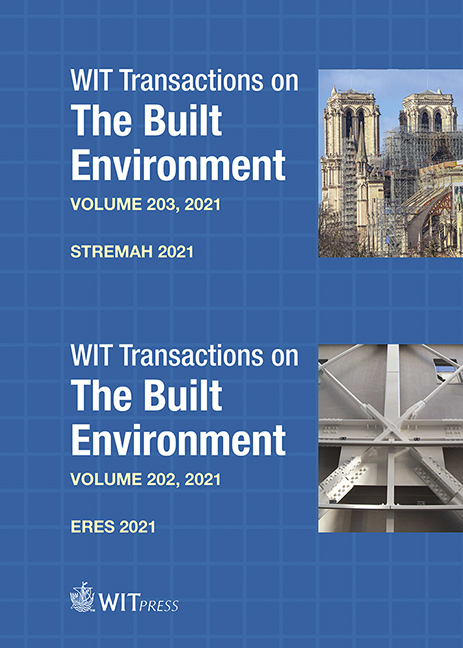GIUSEPPE VACCARO: AN “EXPERIMENTER” OF A CONSTRUCTIONAL MODERNITY
Price
Free (open access)
Transaction
Volume
203
Pages
10
Page Range
5 - 14
Published
2021
Size
4,132 kb
Paper DOI
10.2495/STR210011
Copyright
Author(s)
ANTONELLO PAGLIUCA, PIER PASQUALE TRAUSI, DONATO GALLO
Abstract
In the first half of the 20th century throughout Europe, on the rubble produced by the two World Wars, new cultural ferments arise as a “critical” response to the socio-political events that affected Europe. In particular, in the Italy of the early 20th century there was a series of changes that affected not only architecture but every aspect of community life. The most important one was the introduction of the industrial process also in the construction sector favoured the search for innovative architectural solutions that led to the definition of a style called ‘Modern’: architecture must communicate clarity and knowledge, in order to achieve greater utility through the use of materials and construction systems to combine beauty and functionality of the building (see B. Taut). In the wide panorama of the most important figures of Modern Italian architects, the architect Giuseppe Vaccaro distinguished himself particularly in his different (often daring) architectural experiments for the ability to combine the typical instances of the typically Italian construction tradition with the new avantgardes constructive and technological of the beginning of the century. In fact, different times Giuseppe Vaccaro was collaborator of architect Marcello Piacentini and forefather of Modern architectural culture in Italy, he was the author, in particular, of one of the most important buildings of the Modern: the “Palazzo delle Poste” in Napoli. The building, designed together with Gino Franzi between 1933–1936, is close by the ancient Cloister of Monteoliveto; in particular, the main facade, articulated along a hyperbolic line, becomes an occasion for architectural and urban renewal of the district of Charity, in the centre of Napoli. The monolithic nature of this architecture and the typological, technological, constructive and of material characteristics become an instrument through which the architect tells of a “new Italy” that experiments innovations and avant-gardes of materials and constructive aspects, as result of experiments of Italian industries of the early 20th century. The research, part of a broader study of 20th-century architecture, emphasizes, therefore, the need for a historical-analytical cognitive approach as a tool for the conservation the importance of each “value” of these architectures as an expression of a “Made in Italy” style.
Keywords
‘900 architecture, construction, technological characterization, modern movement




